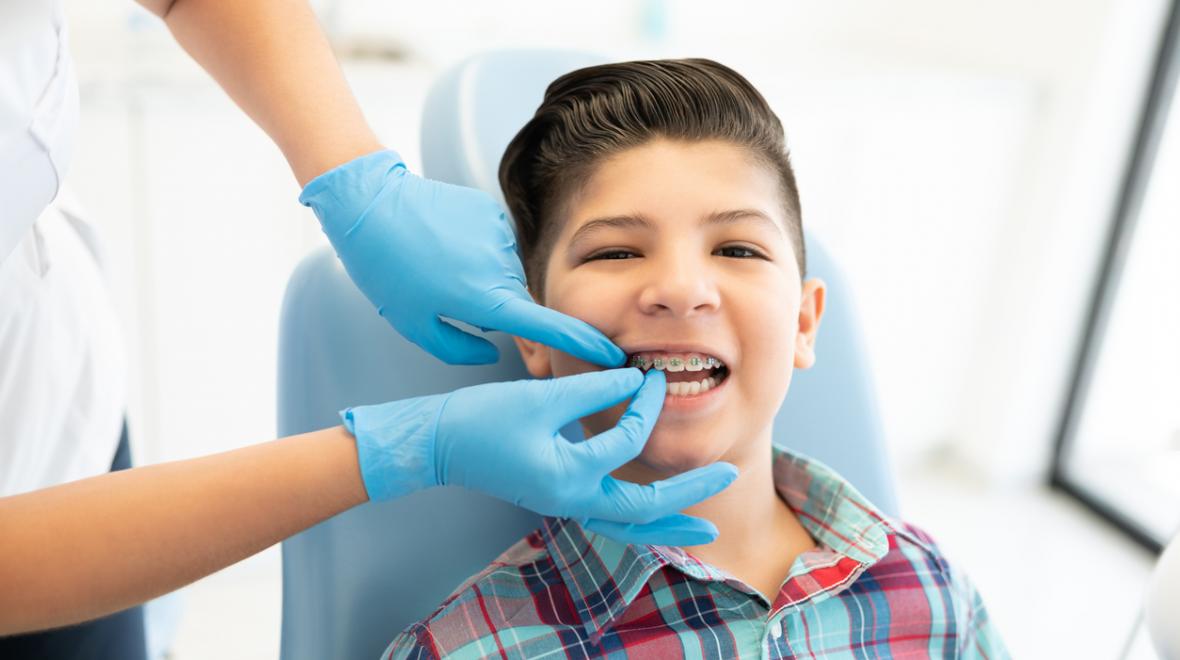
Though he grew up in Singapore, Dr. Wuiteng Koh considers Seattle, where he lives with his wife and two daughters, his true home. After completing dental school at California’s Loma Linda University School of Dentistry at the age of 19, Koh began practicing dentistry full-time. Witnessing the positive effects of a healthy smile on his patients’ lives, Koh became intrigued by orthodontics, and went on to complete his graduate residency in the field shortly thereafter. He’s been a practicing orthodontist in Northgate for almost 30 years. “Without question, the most enjoyable part of orthodontics is getting to know our patients and families — for our younger patients, we have the privilege of watching them grow before our eyes. And, of course, helping create and transform smiles is also very special to us,” says Koh.
In a conversation with ParentMap, Koh shares some top tips of his trade with parents to help them navigate their child’s (or their own) orthodontic care.
When is the best time to start orthodontic treatment?
Both the American Academy of Pediatric Dentistry and the American Association of Orthodontists recommend that children get an initial orthodontic evaluation around the age of 7. This allows the orthodontist to help parents understand what conditions may exist or may be developing, and whether early intervention may reduce significant issues in the future.
What issues do braces typically correct?
Some issues that benefit from treatment at an early age are dental, skeletal and developmental. These include significant crowding or spacing problems, severe overbites or underbites, crossbites, flared teeth, narrow palates, etc. Other issues are functionally driven; these include habits such as thumb-sucking, which can cause malformation of jaws and misalignment of teeth. Early treatment to improve the airway [which focuses on treating the underlying causes of obstructed breathing] is also taking on a greater spotlight with the increased knowledge we have about breathing.
What is the process for attaching braces to the teeth?
It usually takes two to three appointments to place appliances such as expanders. Typically, this involves taking a mold of the teeth for the expander to be made. Advances in 3D technology are reducing the number of molds we take, which is really great. With appliances that are in the roof of the mouth, there will be some effects on speech and eating, and the tongue may be uncomfortable for a few days while a patient adapts. After this time, patients get used to it, and many even forget it’s in their mouth.
What’s the best way to manage the minor pain from new braces?
Braces are not difficult to get used to, and with the use of very light beginning wires, discomfort should be minimal. We recommend parents monitor their child’s response and give Children’s Tylenol or Children’s Motrin (with food) as appropriate during the initial adjustment period.
When might Invisalign be an option?
Invisalign are clear aligners that are an alternative to braces, even for our young patients. There are advantages, such as fewer food restrictions and easier brushing and flossing, as well as disadvantages — will the child be committed to something removable? — that we discuss with both the patient and parents to help them make the correct choice.
What maintenance is required with braces and how often are checkup visits needed?
For the most part, once treatment is moving along, checkups are in intervals of four weeks. Appointments are typically 20–30 minutes long. These visits are critical, as I need to monitor how a patient is responding to treatment, whether new wires should be placed and whether there should be any changes to the plan.
What are your tips for taking care of teeth with braces?
For our younger patients, I feel it is important for a parent to be involved with helping their child brush and floss. This does not mean every single time, but at least one to three times per week, where the parent is checking the teeth after brushing and flossing, or even doing it on behalf of their child. Another thing I suggest is to first brush without toothpaste — the foaminess of toothpaste may make it difficult for kids to see where plaque or food is still present, and toothpaste makes the mouth taste clean without necessarily being clean. After this is done, brush again with toothpaste to get the benefits of fluoride on clean tooth surfaces.
What foods are absolute no-no’s for people with braces?
With braces and other appliances, anything that is very sticky and hard should be avoided, such as Laffy Taffy, Jolly Ranchers and lollipops — especially the large ones — and other candies. In addition, we ask that foods be cut [into pieces], so give your child apple slices instead of having them bite into an apple. Also, they should take smaller bites. Chewy foods, such as pizza crust, can be problematic, because many of these foods involve twisting actions and may break brackets off.
What are some common emergencies you see with braces and how are they best handled?
For loose wires, a home remedy would be to use a cutting tool to cut the wire off at the nearest brace that is still fixed to the tooth, then use a little bit of wax for comfort. For loose brackets, these usually are not uncomfortable, and may be left alone. However, if they are problematic, then either holding it down with a little wax, or cutting a wire to remove the loose braces may be done. Our office has an emergency line if any of these things happen, and one of my talented staff members will guide a parent through what to do.
When it’s time for braces to come off, a lot of kids struggle with wearing retainers consistently. How can parents help with this?
One thing I absolutely love to do is show kids what they accomplished during their treatments, and I give them a lot of kudos for doing so, especially in front of their parents. I hope this makes them proud of the results and want to maintain them. In addition, reminding them of how crooked their teeth may have been before all this started or how much of an overbite was previously present is also an excellent motivation for them. Finally, we discuss a regimen of retainer wear that we hope our patients will not find too cumbersome; for example, is it possible for them to wear retainers only at night instead of full-time?
What are your suggestions for active measures parents can take to encourage their kids to properly care for their braces and teeth?
For me, I think it is always best to see if kids themselves want treatment. Otherwise, orthodontics is being done to them instead of for them. One nice thing about orthodontics is that for the majority of our patients, treatment does not have to start right away. This gives a young patient time to warm up to the idea, rather than feel it is forced on them. Other than that, I believe positive feedback from the parent to the patient is always good. Mentioning to a kid that their teeth are “sure looking straighter” provides the positivity that anyone, especially a young person, wants to hear.











